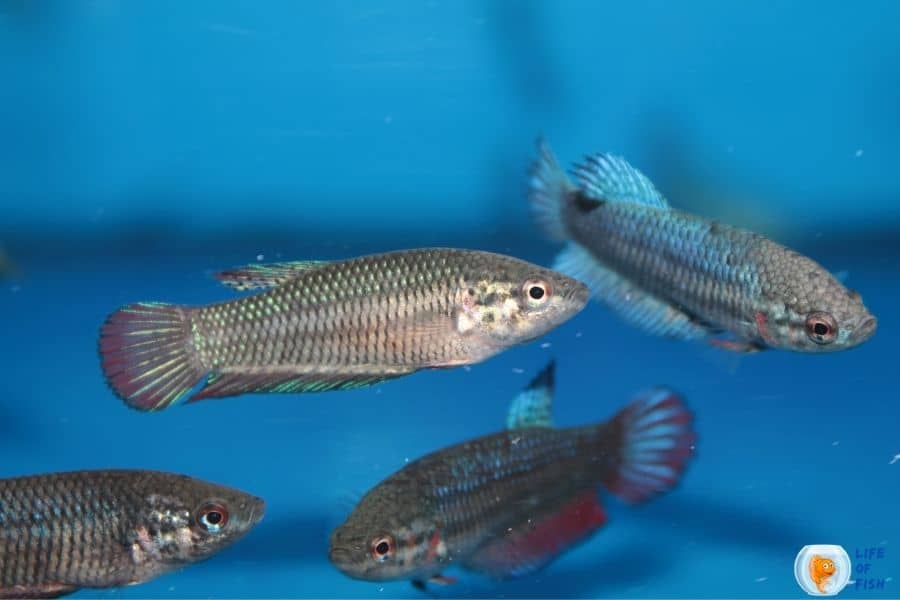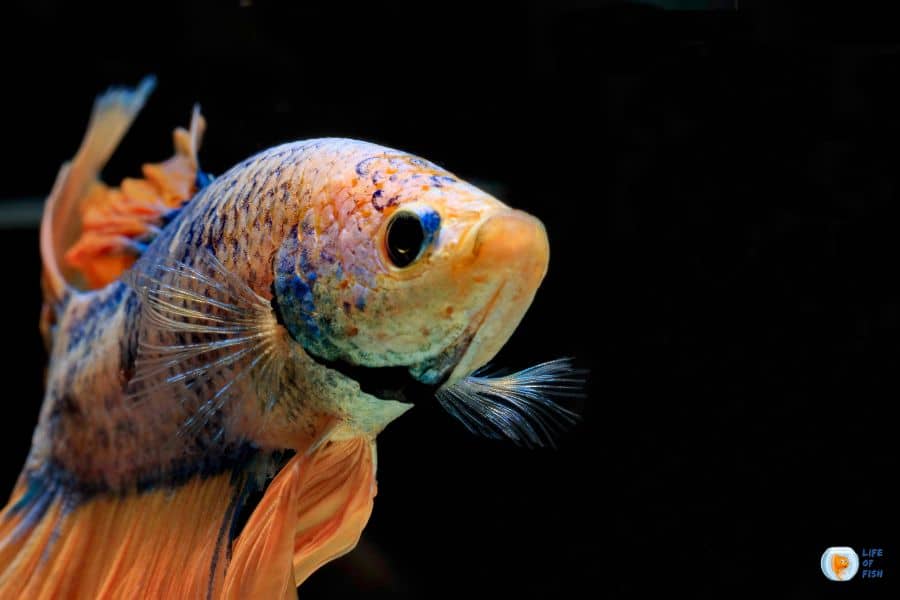The idea of keeping multiple female bettas together in a “sorority” community tank intrigues many aquarists. Who wouldn’t want to watch the interactions of these colorful, flowing-finned fish? However, making a betta sorority tank takes a long time, knowledge and effort. Follow this guide to enhance your chances of a harmonious habitat.

Tank Size – Bigger is Better
Jump To
- 1 Tank Size – Bigger is Better
- 2 Aquascape Wisely
- 3 Choose Tankmates With Care
- 4 Select Young, Non-Aggressive Females
- 5 Quarantine and Acclimate New Additions
- 6 Maintain Pristine Water Quality
- 7 Have Backup Plans and Remove Bullies
- 8 Be Patient and Consistent
- 9 Troubleshooting Common Betta Sorority Problems
As active, territorial fish, female bettas need ample swimming room to reduce aggression. Aim for:
- Minimum of 20 gallons (75 liters)
- Rectangular shape offers more surface area
- Additional 5 gallons (20 liters) per extra betta
This diluted space decreases hostilities and allows escaping harassment. Go as big as possible!
Aquascape Wisely
A well-planned aquascape facilitates betta success:
- Heavy plant cover provides visual barriers and hiding spots
- Driftwood, rock caves, and decor create line-of-sight breaks
- Open zones allow free swimming
- Dim lighting offers shady retreats
- Minimal aquatic hardness lowers injury risk
Structure the layout to interrupt chasing and fighting. Fill every level from substrate to surface.
Choose Tankmates With Care
Sorority life is already chaotic for bettas. Adding other fish ups the stress and aggression. Stick to:
- Bottom dwellers like small cory cats that ignore bettas
- Peaceful schooling fish like rasboras that occupy upper levels
- Shrimp or snails to compete less for food
Avoid fin-nipping species or those needing warmer temperatures incompatible with bettas. Never mix males and females!
Select Young, Non-Aggressive Females
Female betta personality plays a pivotal role. When selecting, avoid:
- Lone bettas raised in isolation
- Visibly aggressive or territorial fish
- Adults over 6 months old
- Known fin-nippers or bullies
The best candidates are juvenile females under 3 months, ideally raised together. Request the calmest individuals from the breeder or store.
Quarantine and Acclimate New Additions
Any new bettas should be quarantined 3+ weeks and treated for parasites before sorority introduction. When adding, follow this protocol:
- Rearrange décor to disrupt old territories
- Turn off lights and reduce activity
- Float container for 30 minutes to adjust temperatures
- Release new fish under plant cover after dark
Proper acclimation and calm setting prevent undue stress.
Maintain Pristine Water Quality
Fluctuating water conditions trigger aggressive behaviors. Be vigilant with:
- Twice weekly partial water changes
- Checking temperature, pH, ammonia, etc.
- Filter and heater maintenance
- Siphon waste from substrate
Poor water quickly leads to illness and fighting. Don’t slack on maintenance!
Have Backup Plans and Remove Bullies
Despite best efforts, you may need to intervene with bullying. Have prepared:
- Isolation tanks for time-outs
- Backup aquariums if needed long-term
- Closely monitor for ripped fins or aggression
Don’t delay removing harassers. Stay alert to any disturbing dynamics and act promptly. Don’t wait for fatalities to occur!
Be Patient and Consistent
Even in optimal settings, expect occasional chasing and squabbles as the hierarchy establishes. Resist overreacting and allow reasonable disputes. But if systemic bullying emerges, make changes.
With close observation, proactive care, and backup contingencies, your sorority can thrive! Follow these tips to enjoy watching multiple female bettas coexist peacefully.

Troubleshooting Common Betta Sorority Problems
Aggression after water change?
Redecorating triggers territorialism. Rearrange layout monthly to keep balanced.
One betta stays hidden and inactive?
She’s intimidated and stressed. Isolate and treat any health issues before reintroducing to a calmer tank.
Newly introduced bettas are rejected?
Turn off lights and use tank dividers to slowly acclimate new fish. Release at night so they remain unnoticed.
Sudden outbreaks of fighting and chasing?
Rapidly remove aggressors. Check water parameters and treat any issues discovered.
Bettas remaining very inactive and lethargic?
Ensure water quality is pristine. Consult a vet for potential underlying illness.
With meticulous tank setup, high maintenance, and patience, you can enjoy a vibrant betta sorority. But also be prepared to separate any problem fish for a peaceful community long-term.
